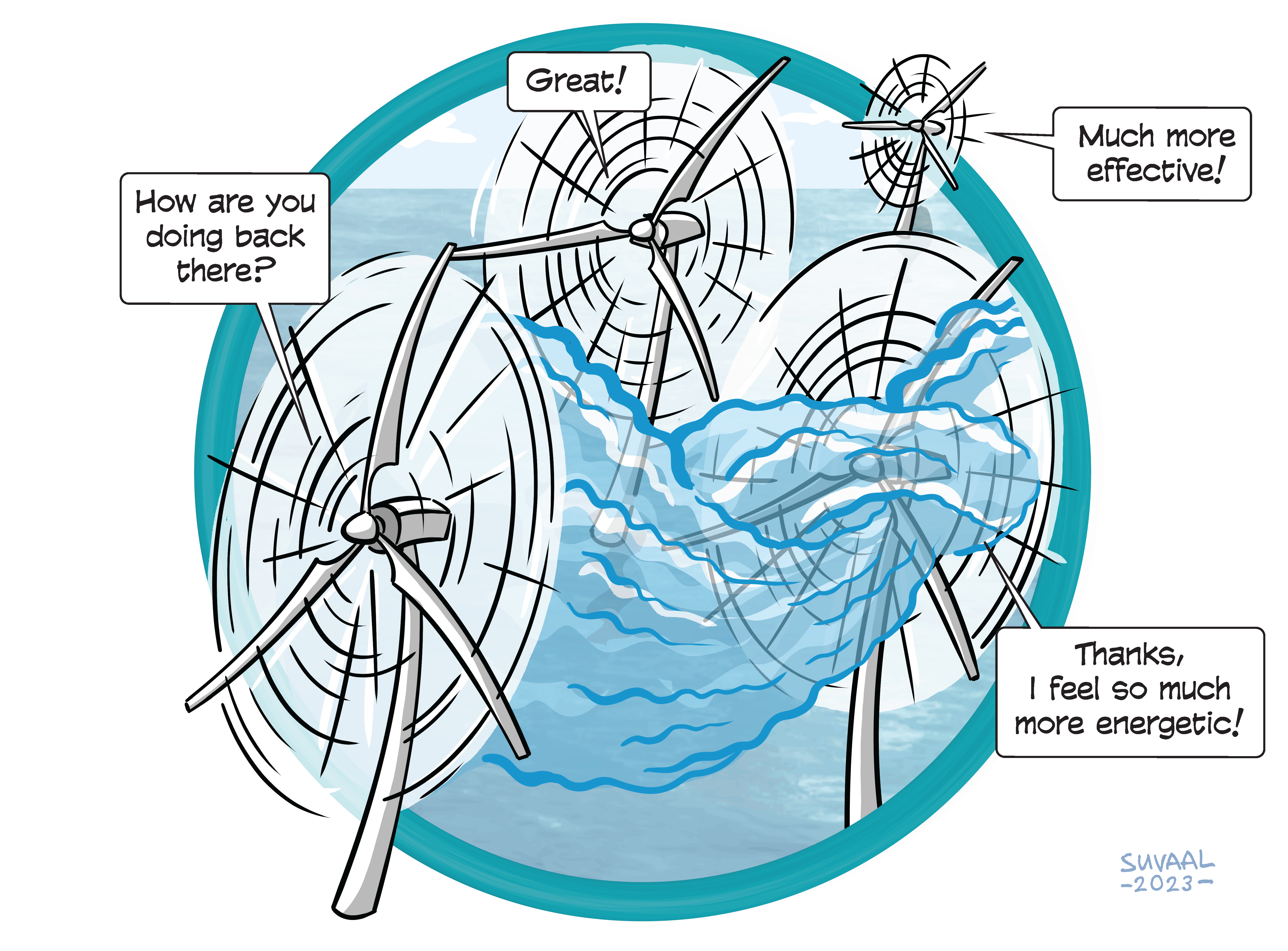The Helix approach: enhanced wake mixing in wind farms
Research Themes: Energy, Water & Maritime, Software technology & Intelligent Systems


A TRL is a measure to indicate the matureness of a developing technology. When an innovative idea is discovered it is often not directly suitable for application. Usually such novel idea is subjected to further experimentation, testing and prototyping before it can be implemented. The image below shows how to read TRL’s to categorise the innovative ideas.
Summary of the project
After a wind turbine extracts energy from the wind, a slow-moving wind field known as ‘the wake’ lingers behind the turbine for quite some distance. Since wind turbines are usually closely spaced in farms, these wakes significantly affect downstream wind turbines’ production totaling up to 20% performance loss annually. The Helix approach is a novel control technology that reduces this negative effect by periodically moving the flow to create a helix-shaped wake, which allows more efficient mixing of the low-velocity wake with the high-velocity free stream. This method differentiates itself from the state-of-the-art by introducing dynamics while deviating only slightly from a turbine’s normal operational envelope. However, the biggest challenge is balancing the costs associated with the fatigue increase generated by this control approach with its production gain. In a commercial setting, a wind farm developer might choose to activate the Helix when the electricity prices are high to generate additional revenue, while it may decide to deactivate the Helix during periods of low electricity prices, to reduce the strain on the turbine.
What's next?
Moving from bottom-fixed turbines in shallow waters to floating turbines in deep waters, Future developments could include co-design of floating wind turbines and wake mixing controllers. By leveraging the extra degrees of freedom of a floating turbine wake mixing may be instigated through movement of the turbine, reducing the demand of critical actuators. This would save significantly on actuator costs and improve the turbine’s lifetime, while still benefiting from wake mixing. Other developments include the synchronization of the wake mixing control action of the downstream turbine with the upstream turbine, such that the actuator costs and production gains can be optimized further.
Contribution to the Energy transition:
Wake mixing controllers such as the Helix approach may revolutionize the wind energy sector and our journey towards a carbon-neutral future. Its strength lies in its simplicity. Without the requirement of conceptual changes, such as additional flaps or different rotor layouts, the Helix approach can readily be implemented in most existing commercial wind farms through a simple software update.
- Ir. Mees van Vondelen
- Emanuel Taschner MSc
- Jonas Gutknecht MSc
- Dr.ir. Marion Coquelet
- Ir. Daniel van den Berg
- Prof.dr.ir. Jan-Willem van Wingerden
Faculties involved
- 3ME
